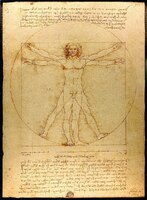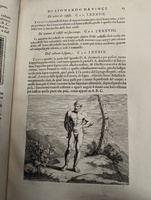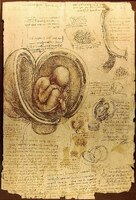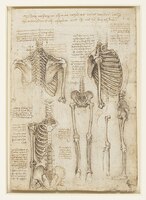Famous Works
Leonardo Da Vinci is one of the most famous painters to have ever existws. He has produced some of the most successful and globally known artworks, such as Mona Lisa (1503-1519, Last Supper (1495-1498), Self Portait (1490/1515-1516), and more. His compilation of advice to young painters A Treatise on Painting was highly influent for European artists. While his artistic works as well as his advice are highly influential, it is essential to remember that Da Vinci was not only an extraordinary painter but also a highly skilled scientist, anatomist, and inventor. Leonardo did not receive recognition for his scientific writings during his lifetime. as his notebooks were not published until well after his death
A handful of his famous works on anatomy are featured below. Many individuals recognize the Vitruvian Man and A fetus in the womb. Alongside the other artworks, these complex and inventive illustrations offer a glimpse into the mind of a true polymath (one whose knowledge spans a wide variety of topics). These illustrations display Leonardo Da Vinci’s scientific processes, thoughts, and experiments. One can only wonder how much farther advanced our knowledge of anatomy would be had his works been received during his time period.



